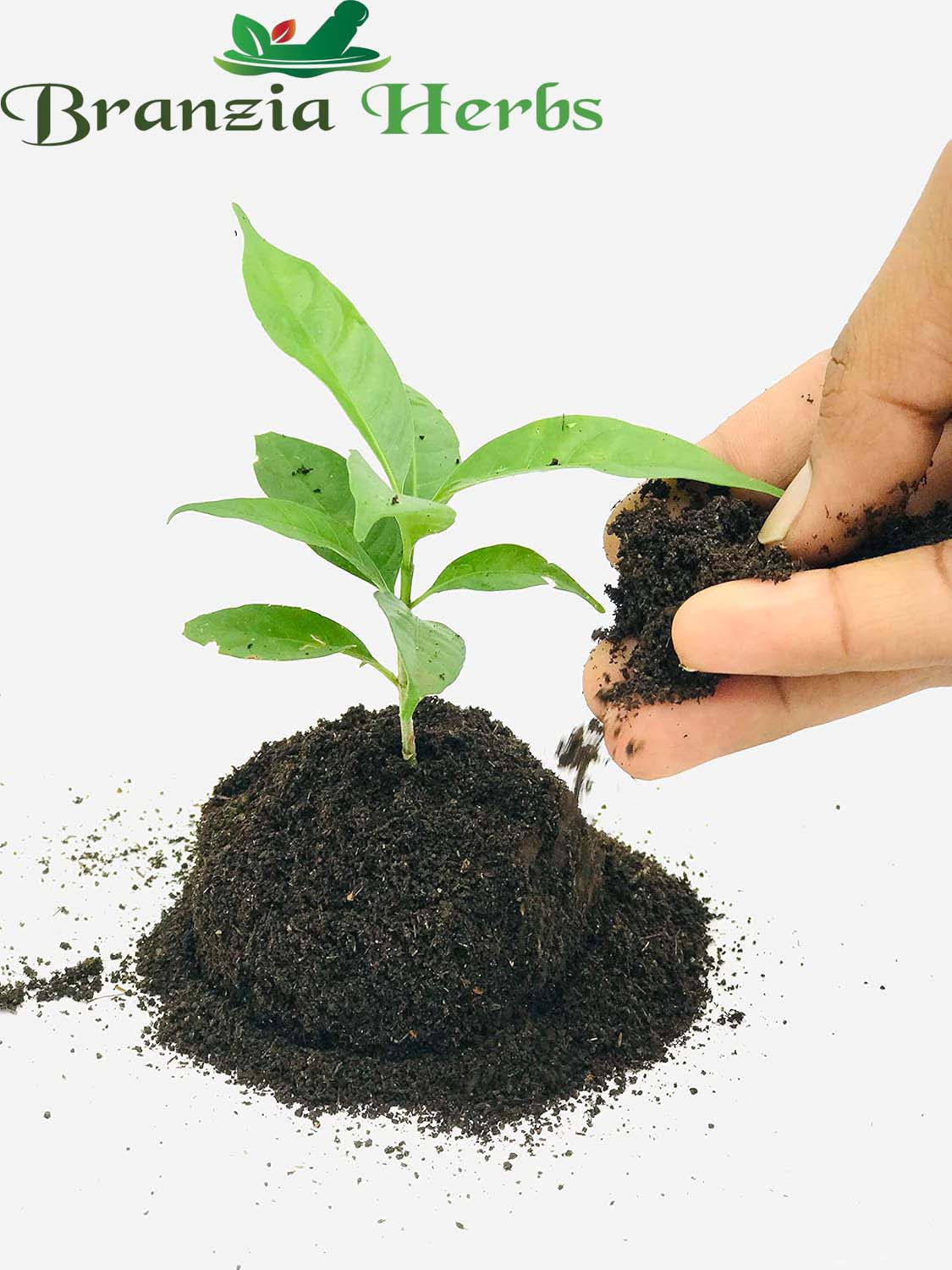Gunja, commonly known as White Gunja (Abrus precatorius), is a plant known for its strikingly beautiful seeds, which are often used in traditional jewelry, ornaments, and folk medicine. The plant is also known as Rosary Pea or Jequirity Bean. Here’s a comprehensive guide on Gunja Safed (White Gunja), including its characteristics, benefits, and planting care:
Characteristics
-
Appearance:
-
Seeds: White Gunja seeds are small, round, and typically white with a red or black spot at the center. They are about 6-8 mm in diameter and are often used in traditional jewelry and crafts.
-
Plant: The plant is a climbing vine that can grow up to 3-5 meters (10-16 feet) in length. It has compound leaves with ovate leaflets and small, red or pink flowers that give way to pods containing the seeds.
-
Plant Size:
-
Height: Can grow up to 3-5 meters (10-16 feet) in length.
-
Spread: The vine can spread extensively, climbing over structures or other plants.
Benefits
-
Cultural and Decorative Uses:
-
Jewelry and Crafts: The seeds are often used in traditional jewelry, rosaries, and decorative items due to their distinctive appearance. They are valued for their beauty and durability.
-
Folk Art: In many cultures, Gunja seeds are used in folk art and traditional practices.
-
Medicinal Uses:
-
Traditional Medicine: In some traditional medicine systems, parts of the plant are used for various ailments. However, it is important to note that the seeds contain toxic compounds and should be used with caution.
-
Toxicity Warning:
-
Toxic Compounds: The seeds of Gunja contain a highly toxic protein called abrin. Abrin can cause severe poisoning if ingested, inhaled, or injected. Therefore, extreme care should be taken when handling the seeds, and they should not be used for medicinal purposes without proper knowledge and safety precautions.
Planting Gunja Safed (White Gunja) Seeds
-
Preparation:
-
Seed Treatment: Gunja seeds are hard and benefit from scarification (scratching or nicking the seed coat) to improve germination rates. Soaking the seeds in water for 24 hours before planting can also help.
-
Timing:
-
Optimal Season: Plant seeds in spring or early summer after the last frost when soil temperatures are consistently above 20°C (68°F).
-
Soil and Location:
-
Soil Type: Prefers well-drained, loamy or sandy soil with a slightly acidic to neutral pH. Ensure good drainage to prevent waterlogging.
-
Location: Choose a sunny location with full sun to partial shade. Gunja thrives in warm climates and requires plenty of sunlight.
-
Planting:
-
Sowing Seeds: Sow seeds about 1-2 cm (0.4-0.8 inches) deep in the soil. Space seeds or seedlings about 30-45 cm (12-18 inches) apart to allow for spreading.
-
Germination: Seeds typically germinate within 14-21 days. Keep the soil consistently moist but not waterlogged during this period.
-
Watering:
-
Initial Care: Water the soil thoroughly after planting and maintain consistent moisture until seedlings are established.
-
Ongoing Care: Water regularly but avoid overwatering. The plant prefers moderately dry conditions once established.
-
Fertilizing:
-
Nutrients: Gunja does not require heavy fertilization. Apply a balanced fertilizer or compost at planting time and as needed throughout the growing season.
Care and Maintenance
-
Pruning:
-
Trimming: Regularly trim or prune the plant to manage its growth and prevent it from becoming too invasive. Cut back any excessive growth to encourage bushier, more manageable plants.
-
Pest and Disease Management:
-
Monitoring: Gunja is relatively pest-resistant but can be affected by common garden pests and diseases. Monitor for signs of infestations or fungal infections.
-
Control: Use organic pest control methods if needed and ensure good garden hygiene to prevent disease.
-
Protection:
-
Winter Care: In colder climates, Gunja may need protection or be grown as an annual. In warmer climates, it can be grown year-round.
Environmental Considerations
-
Climate Adaptation: Gunja is suited to tropical and subtropical climates. It thrives in warm, sunny conditions but may not survive frost.
-
Sustainability: Ensure planting practices are sustainable and adhere to local regulations regarding agriculture and conservation.
Summary
Gunja Safed (White Gunja) seeds are valued for their aesthetic appeal and traditional uses in jewelry and crafts. However, they contain toxic compounds and must be handled with care. By following proper planting and care guidelines, you can successfully grow this ornamental vine and enjoy its decorative qualities. Gunja thrives in warm, sunny conditions and requires minimal water and fertilization for optimal growth. Its beautiful seeds make it a valuable plant for crafting and cultural uses, but caution is essential due to its toxicity.







